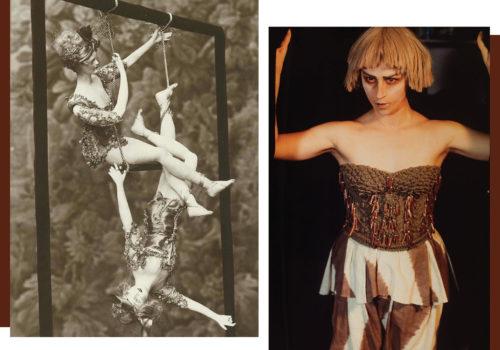This is the twenty first dialogue in the Ettore Molinario Collection. I have the pleasure of starting 2023 staging an imaginary encounter between Consuelo Fould and Cindy Sherman. Perhaps few remember the first, yet we can consider her a pioneer of those issues that the American artist has been dealing with for forty years now. This dialogue is therefore a wish and a tribute to the women who still fight for their identity and their rights. “Zan Zendegi Azadi”, women, life, freedom, the women in Iran cry. And whatever our gender, we are with them.
Ettore Molinario
Our destiny is born with our name. And the destiny of Consuelo Fould, French painter and inventor, began in 1861 when her mother, Valérie Simonin, actress and writer, chose for her daughter the name of the protagonist of a novel by George Sand, precisely Consuelo. And like Sand, pseudonym of Amantine Aurore Lucile Dupin, Valérie gave herself a male identity, that of Gustave Haller, to sign her books, among them L’enfer des femmes. Even Valérie’s second daughter, another painter in the family, will choose to be ideally a man, signing the canvases with the name Georges Achille-Fould, where Georges is a tribute to her stepfather, Prince Georges Stirbey while Achille honours the memory of her paternal grandfather, Achille Fould, minister of the finances of Louis Napoléon Bonaparte.
In this jungle of names, which transforms the female identity and strengthen it in the transition to the male, Consuelo Fould decides to take another path and reaffirms her right to keep her name, becoming emancipated as a woman of talent. She was a woman who had a great desire to refute Voltaire, when the philosopher complained of knowing “very wise women as well as women warriors, but never women inventors”.
In 1897, the first newspaper directed, edited and even administered by women alone, La Fronde, was born in France. And among many intuitions Marguerite Durand, editor of the magazine, had the one of giving news of the patents born from the female genius. Between 1899 and 1903 La Fronde presented 531 patents among which five, concerning various models of corset, belonged to Consuelo Fould. In 1919 this very modern painter in an almost advertising style – her portraits will be the cover of the first illustrated magazines – had also registered the patent for a jointed doll and had photographed her creatures in a series of images that exalted the ductility of the poses and roles.
Certainly the history of humanity did not changed its course, not even with the invention of a special upholstery nail, another Fould’s patent, but we are captivated by the irony of a woman who announces herself as an inventor by instilling mobility, therefore breath, warmth and change, to the stereotypes of the female world. Was it a coincidence that in 1920 the Opéra Garnier celebrated the four hundredth performance of the ballet Coppélia, the story of a mechanical doll that comes to life? A coincidence, we would like to add, if in the early 1980’s Cindy Sherman began her long and extraordinary analysis of femininity reinterpreting the «dolls», the stereotypes of Hollywood cinema?
In 1983 Dianne Benson had the idea of involving Sherman to promote the most original clothes of her boutique in SoHo. And the artist, faithful to her autobiographical vision, worn her clothes and took the pose of hundreds of models before her, denouncing the rigidity and submission of women to the standard of beauty imposed by fashion. Had Cindy been a girl of the early twentieth century, in a rope and beaded bustier, she could have performed together with Consuelo Fould’s acrobats. She too would rock upside down. And she too, in the name of the mother, the daughter and the spirit of the new century, would have patented another destiny.
Ettore Molinario
















